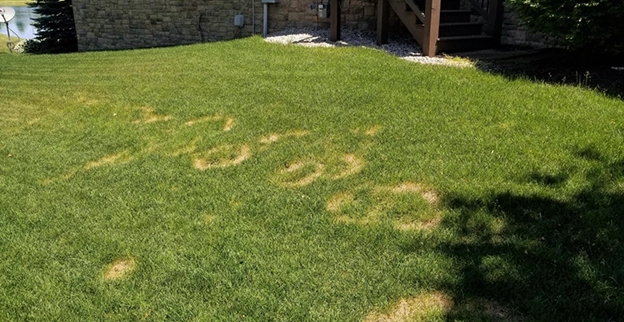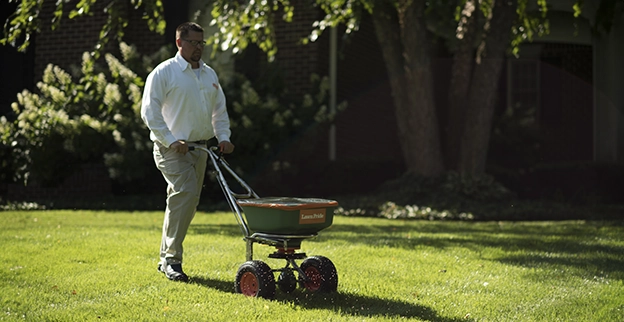Knowing what type of lawn fungus you have is crucial for proper treatment and recovery of your lawn.
Red Thread
Red Thread is thin, red, needle-like strands extending from the grass blade. This is a LEAF disease and is caused by a NITROGEN deficiency. The affected areas will recover with the application of nitrogen. The disease can develop at any time of year, but most common in cool conditions, typically in the spring and fall, especially during long evening dew periods.
Dollar Spot
Dollar Spot form small spots the size of a softball or smaller. This is a LEAF disease and is caused by a NITROGEN deficiency. The patches will typically recover fairly quickly with the application of nitrogen. Dollar Spot typically develops due to excess growth from the constant rain and excess rainfall sets up ideal conditions for Dollar Spot.
Brown Patch
Brown Patch appears as large brown spots that are brown all the way through the "patch". This is a LEAF disease. Brown Patch can develop when temps are in the mid to upper 80's. High humidity, heavy dew formation, and occasional precipitation also provide ideal growing conditions for this turf disease. Brown Patch can be spread through the lawn from the wheels of the mower. It is typically found around walks and driveways because of the heat that concrete puts off.
Summer Patch
Summer patch presents in ring-like patches. This is a ROOT disease and can kill the affected grass. It stays in the soil and can return year after year. This only affects KY Bluegrass. Very dry conditions make this pop. Usually, in the heat of the summer.
Leaf Spot
A Close look at grass blades infected with leaf spot shows damaged spots or decay on the leaves. From farther away, Leaf spot can resemble drought stress.




